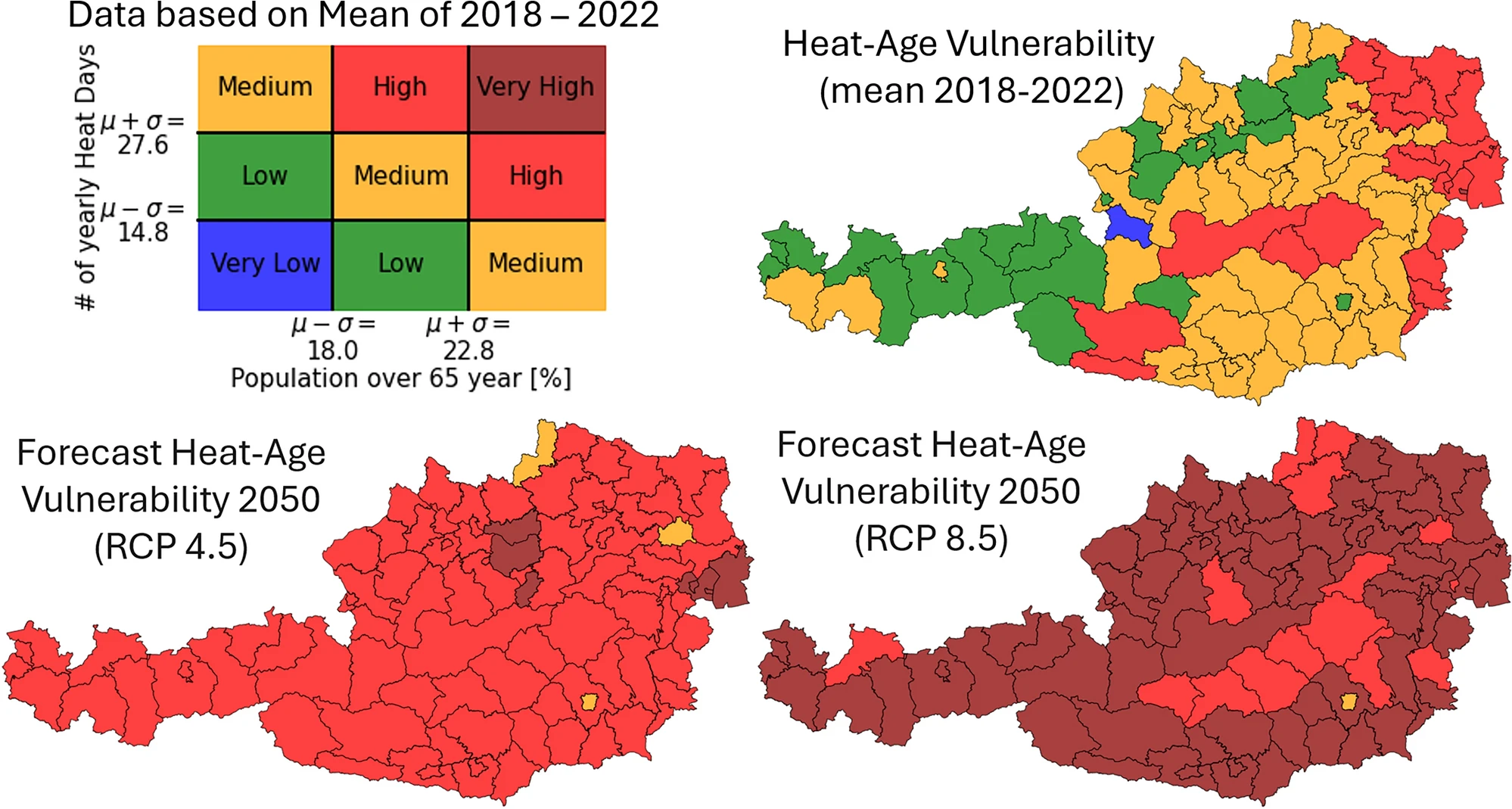Heat, health, and habitats: analyzing the intersecting risks of climate and demographic shifts in Austrian districts
Hannah Schuster, Axel Polleres, Amin Anjomshoaa & Johannes Wachs
Scientific Reports, volume 15, article number: 22812 (2025) – Published:
Abstract
The impact of hot weather on health outcomes of a population is mediated by a variety of factors, including its age profile and local green infrastructure. The combination of warming due to climate change and demographic aging suggests that heat-related health outcomes will deteriorate in the coming decades. Here, we measure the relationship between weekly all-cause mortality and heat days in Austrian districts using a panel data set covering 2015-2022. An additional day reaching 30 °C is associated with a 2.4 % increase in mortality per 1, 000 inhabitants during summer. This association is increased by approximately 50% in districts with a two standard deviation above average share of the population over 65. Using Representative Concentration Pathways (RCP) projections of heat days and demographics in 2050, we observe that districts will have elderly populations and heat days 2-5 standard deviations above the current mean in just 25 years. This predicts a drastic increase in heat-related mortality. At the same time, district green scores, measured using 10 x 10 meter resolution satellite images of residential areas, significantly moderate the relationship between heat and mortality.  Thus, although local policies likely cannot reverse warming or demographic trends, they can take measures to mediate the health consequences of these growing risks, which are highly heterogeneous across regions, even in Austria.
Thus, although local policies likely cannot reverse warming or demographic trends, they can take measures to mediate the health consequences of these growing risks, which are highly heterogeneous across regions, even in Austria.


